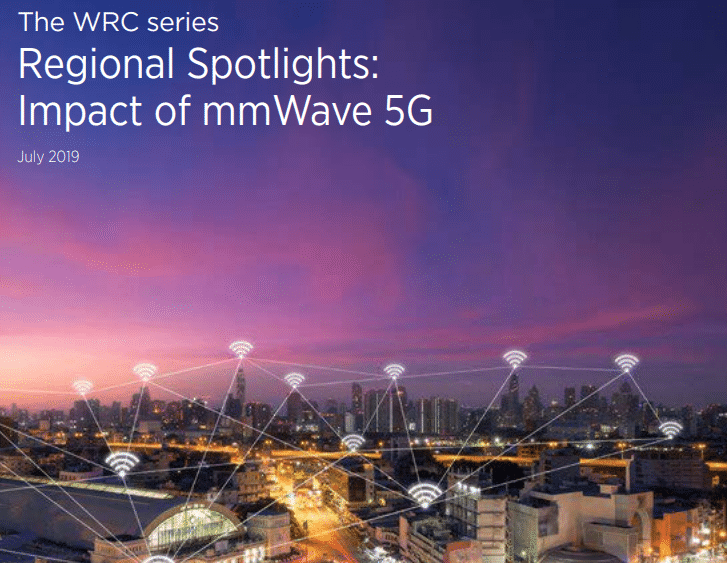This week 3,000 delegates representing nearly 200 nations, will descend on a UN organised ITU conference in Egypt to decide the future of 5G and carve up the airwaves that mobile operators can use for 5G networks – WRC-19 (28 Oct – 22 Nov).
Sub-Saharan Africa’s economic growth from next-generation 5G services will be reliant on the availability of a specific strand of radio frequencies, known as ‘millimetre wave’ frequencies, which are set to be identified for use by mobile operators at WRC-19. However, efforts by Europe and Russia to unreasonably constrain the use of these critical frequencies, due to unfounded claims of potential interference with some space services, has 5G’s future hanging in the balance.
If over-stringent protection unnecessarily limits the spectrum needed for 5G this will have huge consequences for Africa and the global economy. Innovative 5G services reliant on mmWave frequencies will generate $5.2bn of economic expansion – 0.7 per cent of GDP growth – in Sub-Saharan Africa alone by 2034, according to the GSMA’s ‘Regional Spotlights: Impact of 5G mmWave’ report.
The GSMA is calling for Europe to join Africa, the Middle East and the Americas in taking a pro-5G stance at WRC-19 to enhance its digital future.
“The stakes are high – a new generation of 5G services and the economic growth accompanying them will depend on the spectrum decisions taken at WRC-19,” said Brett Tarnutzer, Head of Spectrum, GSMA. “We are calling for Europe to take a pro-5G stance at WRC-19. Some administrations are still determined to limit mobile use of airwaves that 5G requires to reach its full potential. This protectionist attitude will have consequences for our global economy if allowed to prevail.”
The build-up to WRC-19 is a four-year process and the use of mmWave spectrum has been the subject of intense technical study throughout the preparatory process leading up to the conference. WRC-19 will take final decisions after substantial analyses and technical studies. Africa has been progressive in supporting a pro-5G stance from the beginning. Technical studies supported by Africa, the Americas and Arab states, have demonstrated that 5G using mmWave spectrum can co-exist safely and efficiently alongside weather-sensing services, commercial satellite services and others.
Despite this body of evidence, European countries are determined to limit the use of mmWave spectrum by setting unnecessary and overly protective technical conditions.
“It is important to follow studies which make realistic assumptions about how networks will function and make the best use of the spectrum for all,” added Brett Tarnutzer. This approach is being followed in Africa, the Americas and the Middle East but we need to find a global solution, including Europe. Large ‘guard bands’ will be needed – that is empty tranches of unused spectrum separating services – if we have technical limits which are too severe. This will restrict the economic benefit we can gain from finite spectrum resources and harm consumers and industry.”
Benefits of mmWave spectrum
5G, coupled with mmWave spectrum, opens up the potential for low-latency, data-intensive applications that are expected to transform a wide variety of industries and use cases in Sub-Saharan Africa. These will benefit new applications, helping the region’s transport logistics infrastructure (in-land transport hubs and seaports) and extractive industries (mining and hydrocarbon production), among others.
By enabling improvements to vital transport links in the economy, such as port logistics infrastructure, 5G will drive growth in the trade industry. 5G mmWave applications will enable coordinated movement of goods and remote control of essential machinery, leading to more efficient port operations and lower costs, allowing for increased trade. 5G mmWave applications will also make extraction activities in mining and manufacturing more cost-effective and safer by leveraging high speed connectivity and remote object manipulation.
The GSMA raises serious concerns that, without adequate support at WRC-19, the deployment of these 5G services may be delayed for up to a decade.
The GSMA’s ‘Regional Spotlights: Impact of 5G mmWave’ report is available here in English.


